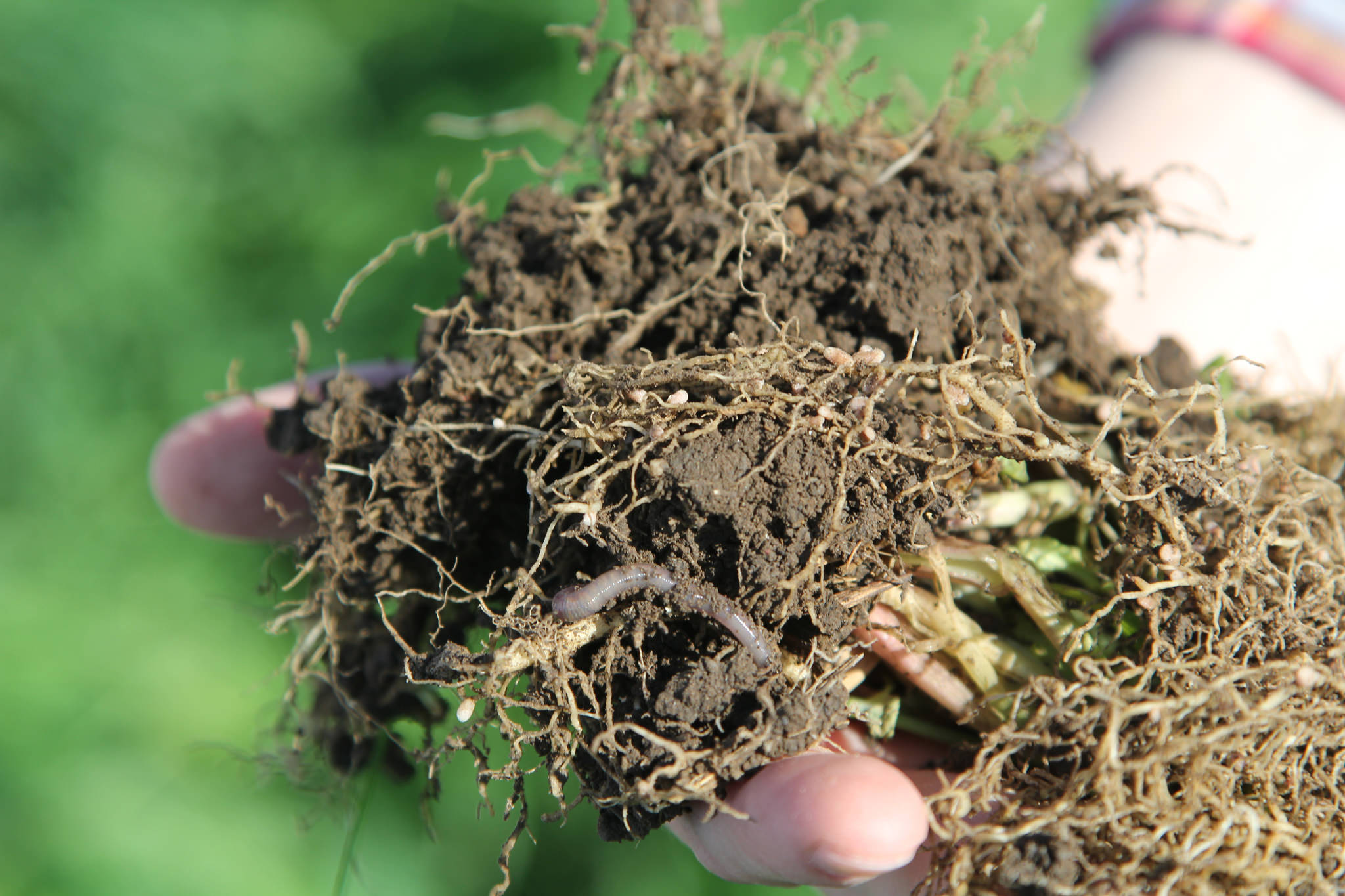Lessons From a Modern Farmer
Healthy soil means a healthy farm.

Modern farmers use a suite of methods to keep their farmland fertile and productive. On last week’s show, we talked about some of those techniques with Doug Palen, a fourth-generation Kansas farmer, and Miriam Horn, author of the new book Rancher, Farmer, Fisherman: Conservation Heroes of the American Heartland. Here are some highlights from that conversation.
Soil encompasses a thriving ecosystem.
According to Horn, “a third of earth organisms live in the soil. And they perform these critical functions. They sustain photosynthesis,” she said, and “they protect plants and humans from disease.”
Plus, “they hold the soil together,” Horn added.
Soil is an important carbon sink.
After oceans, soil is “the second biggest repository of carbon on the planet. It has twice as much as the atmosphere and every plant combined,” said Horn.
Disturbing soil can deprive it of nutrients and release stored carbon.
“If you scramble the soil with a plow, if you twist through it—I liken it to a tornado, where you scramble these symbiotic communities—you collapse the homes that [these organisms] live in,” Horn told Science Friday.
[Take a tour of the thriving ecosystem that exists in soil.]
Scrambled soil invites an explosion of bacteria that “eat up all the organic matter and respire it out as carbon dioxide. So you rob the soil of this vital nutrient, and you add it to the atmosphere where it adds to climate change,” she said.
No-till farming helps keep soil healthy and fertile.
Tillage involves turning the soil to control for weeds and pests and to prepare for seeding. As the U.S. Department of Agriculture notes, “intensive soil tillage can increase the likelihood of soil erosion, nutrient runoff into nearby waterways, and the release of greenhouse gases into the atmosphere.”
In the case of no-till agriculture — which is what Palen practices — farmers leave crop residues in the field after harvesting in an effort to “armor” the soil. These residues include stalks and stubble (or stems), leaves, and seed pods, according to the USDA.
“We’re able to just seed directly into the residues or the crop stubbles that remain on the surface, that are now protecting the soil from wind and water erosion and helping to conserve the water that does fall,” Palen told Science Friday.
Palen’s farm also practices crop rotation. “What we’re constantly trying to do is mimic the native systems, or the natural system, where there’s always something growing. And we try and do that even with the annual crops that we can produce for the consumers, and yet leave the cover on the soil to protect the soil.”
The quality of no-tilled soil can substantially improve over time.
“Over the almost 25 years now that I’ve been doing it, we always monitor the soil’s health, both chemically, with the nutrients, and monitor its organic matter,” Palen said. “And so those numbers have continued to climb, particularly the organic matter, which is such an integral part of the soil.” Palen added that he’s noticed improvements in soil texture over time, too.
No-tilled lands appear to be more resilient during extreme weather events.
“Kansas has been dealing with incredibly extreme weather for the last number of years, swinging from the hottest, deepest droughts in recorded history, to these unseasonal freezes and snowstorms, and then these torrential rains. And the wheat yields in general have been really volatile in line with that,” Horn said.
[A modern farmer shares his conservation tips.]
“But the no-till farmers have seen much steadier and high yields. Their soil is much better at capturing water. It stays very porous. So the water permeates very deep in the soil,” she said. What’s more, no-tilled soil is “much better at holding the water. There isn’t nearly as much evaporation or water loss. And so [these fields are] much more resilient to these extremes of weather.”
These quotes have been lightly edited for clarity. For a full transcript, click here and scroll down to “transcript.”
Julie Leibach is a freelance science journalist and the former managing editor of online content for Science Friday.